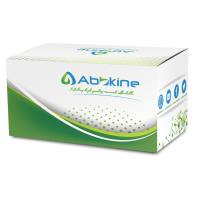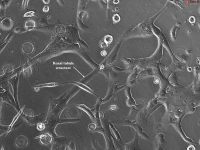Ethidium Bromide assay for complex formation
互联网
- Place 20 m g/ml of DNA (Calf thymus or plasmid) in a polymethacrylate fluorimeter cuvette containing 2 mls of water with 400 ng of ethidium bromide / ml.
- Place the cuvette was placed in either the Kontron SFM25 or the Perkin Elmer fluorimeter and read the fluorescence at emission 510 nm and excitation 590 nm.
- Use free DNA + ethidium bromide as the 100% value and an ethidium bromide solution as the background value.
- Titrate the cationic polymer into the cuvette stepwise (in at least 0.2:1 N:P ratio increments) into the fluorimeter cuvette, followed by gentle mixing.
- Record any changes in fluorescence, and all experiments should be performed in triplicate.
The concentration of ethidium bromide used in this assay is an important parameter that can affect the condensation of DNA. If too much ethidium bromide is used it will cause stabilisation and neutralisation of the DNA structure and inhibit its condensation with cationic polymers. For this reason, and to keep the assay as physiologically relevant as possible, the concentration of ethidium bromide used was as low as possible (400 ng/ml) given the limits of detection of the Kontron fluorimeter. This concentration of ethidium bromide was used in all fluorimetric assays to standardise the technique and allow comparison of the ability of different polymers to condense DNA









